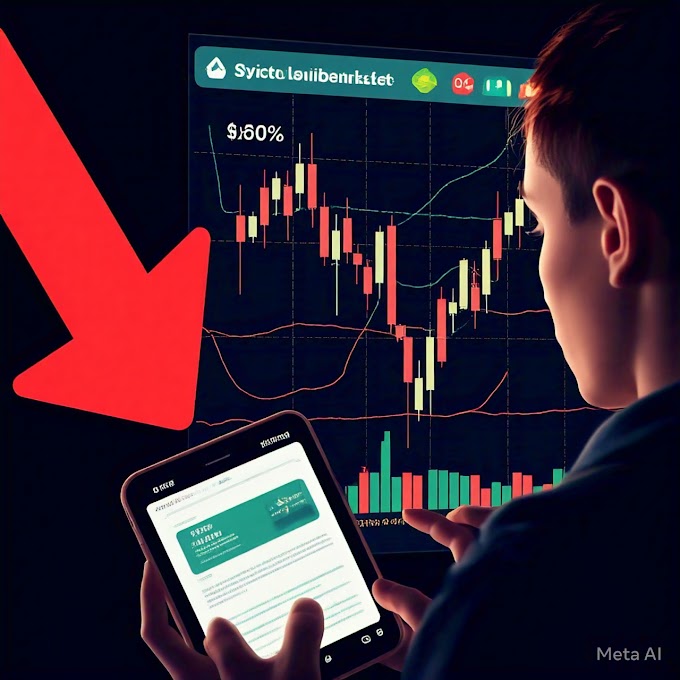Introduction
The cryptocurrency market never ceases to fascinate with its volatility and unpredictability. As we enter another January, questions abound regarding the future of Bitcoin and the broader crypto space. Is the cycle over? Are we headed for another correction, or is this just a temporary pullback? This article dissects historical trends, current market fears, and macroeconomic factors to provide a comprehensive analysis. Let’s dive in.
Table of Contents
The Seasonality of January in Crypto
Historical Presidential Election Year Trends
Key Fears Shaping Market Sentiment
Federal Reserve Policies and Inflation
The Strong Dollar
China’s Economic Troubles
Technical Analysis Insights
January Patterns
Shooting Star Candles and Moving Averages
Opportunities in the Current Market
Trading Competitions and Incentives
AI and Crypto Synergies
Preparing for Future Tops
1. The Seasonality of January in Crypto
January has historically been a month of mixed emotions in the cryptocurrency market. In 2017, Bitcoin saw early strength, rallying from $1,000 to $1,150, only to experience a 34% correction. Fast forward to 2021, another presidential election year, Bitcoin’s price surged from $29,000 to $42,000 before a sharp 32% correction. The month often begins with optimism, only to face mid-month corrections that set the stage for significant rallies in February and beyond. Recognizing these patterns can help traders and investors better time their entries and exits.
2. Historical Presidential Election Year Trends
Presidential election years bring heightened volatility and uncertainty, which is often mirrored in the markets. In 2021, the inauguration of a new administration saw Bitcoin’s price experience massive swings. Similarly, historical data from past election years highlights the “January jitters,” where markets react to macroeconomic uncertainties and the potential policy shifts of a new government. These reactions typically stabilize, leading to rallies in subsequent months.
3. Key Fears Shaping Market Sentiment
Federal Reserve Policies and Inflation The Federal Reserve’s stance on interest rates remains a critical factor. With only two rate cuts priced in for 2025, concerns about prolonged high rates linger. If inflation spikes beyond 3-4%, the Fed may raise rates again, potentially stifling market growth. Conversely, stable or declining inflation could pave the way for rate cuts and market rallies.
The Strong Dollar A robust dollar acts as a “wrecking ball” for risk assets, including cryptocurrencies. However, history shows that strong dollar phases often precede weaker periods, especially under administrations favoring a weaker dollar. This shift could benefit crypto and other risk assets in the medium term.
China’s Economic Troubles China’s deflationary pressures and economic slowdown pose global risks. However, these issues may also have a silver lining, as lower prices for goods could help tame inflation in other regions. Additionally, China’s need to inject liquidity into its economy could create ripple effects, benefiting global markets, including crypto.
4. Technical Analysis Insights
January Patterns Historical January patterns reveal a tendency for early rallies followed by mid-month corrections. These corrections often test key support levels, such as the 50-day EMA, before rebounding in February and March.
Shooting Star Candles and Moving Averages The appearance of a shooting star candle in December’s monthly chart has raised eyebrows. While this pattern has historically been a bearish signal, its reliability in predicting sustained downtrends remains limited. Additionally, pullbacks to the 10-month moving average have been common during bull markets, suggesting potential support levels.
5. Opportunities in the Current Market
Trading Competitions and Incentives Platforms like BitUnix offer enticing opportunities for traders, including rebates and prize pools. Engaging in such activities can provide additional returns, especially for those who actively trade.
AI and Crypto Synergies The AI boom, fueled by advancements in artificial general intelligence (AGI), presents unique opportunities. As AI intersects with blockchain technology, the potential for innovative projects and investments grows exponentially.
6. Preparing for Future Tops
Market tops are notoriously difficult to predict. When they occur, they often come swiftly, leaving little time for reaction. To prepare, investors should:
Regularly take profits during pumps.
Diversify their portfolios to mitigate risks.
Stay informed about macroeconomic indicators and market trends.
FAQs
Q: Is the crypto cycle over? A: While some fear the cycle’s peak has passed, historical trends and macroeconomic factors suggest further upside potential. However, investors should remain cautious.
Q: How does a strong dollar impact crypto? A: A strong dollar often suppresses risk assets like crypto. However, shifts toward a weaker dollar could provide tailwinds for the market.
Q: What role does the Federal Reserve play in crypto markets? A: The Fed’s policies on interest rates and inflation significantly influence market sentiment and liquidity, impacting crypto prices.
Conclusion
January’s seasonality, macroeconomic uncertainties, and technical patterns offer a complex yet navigable landscape for crypto investors. While fears about inflation, the dollar, and global economic pressures persist, opportunities abound for those who stay informed and proactive. By understanding historical trends and current market dynamics, investors can position themselves for success in the months ahead.



.jpeg)
.png)




